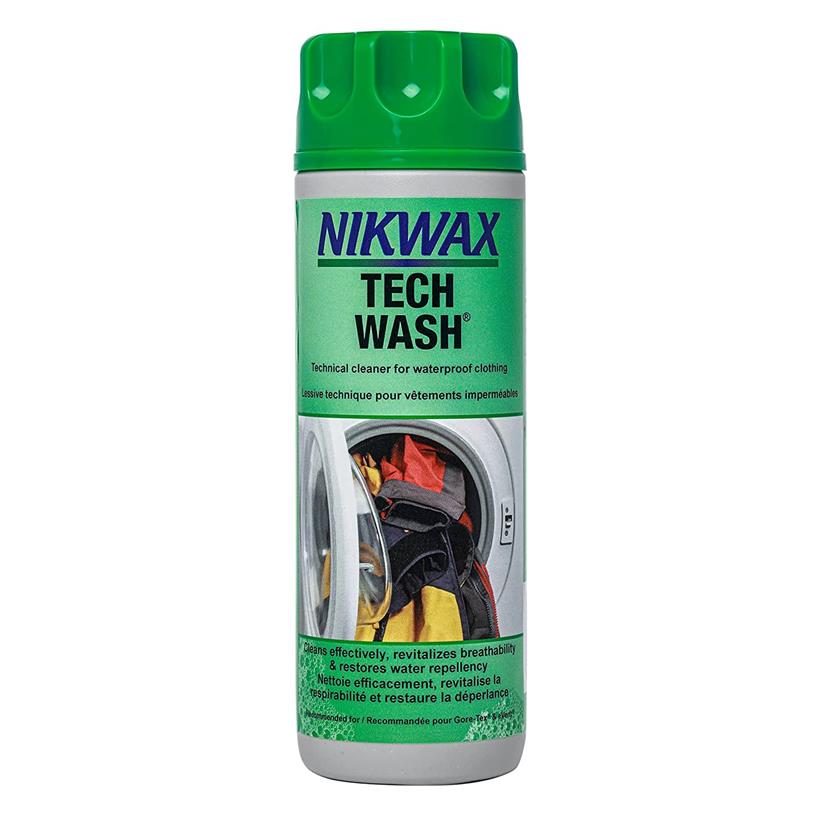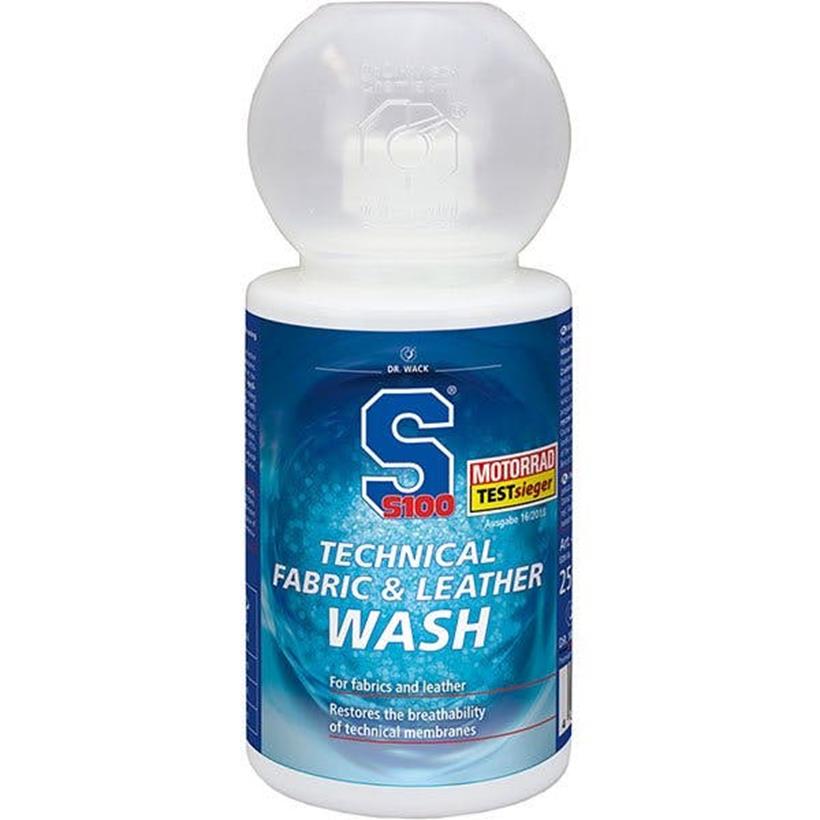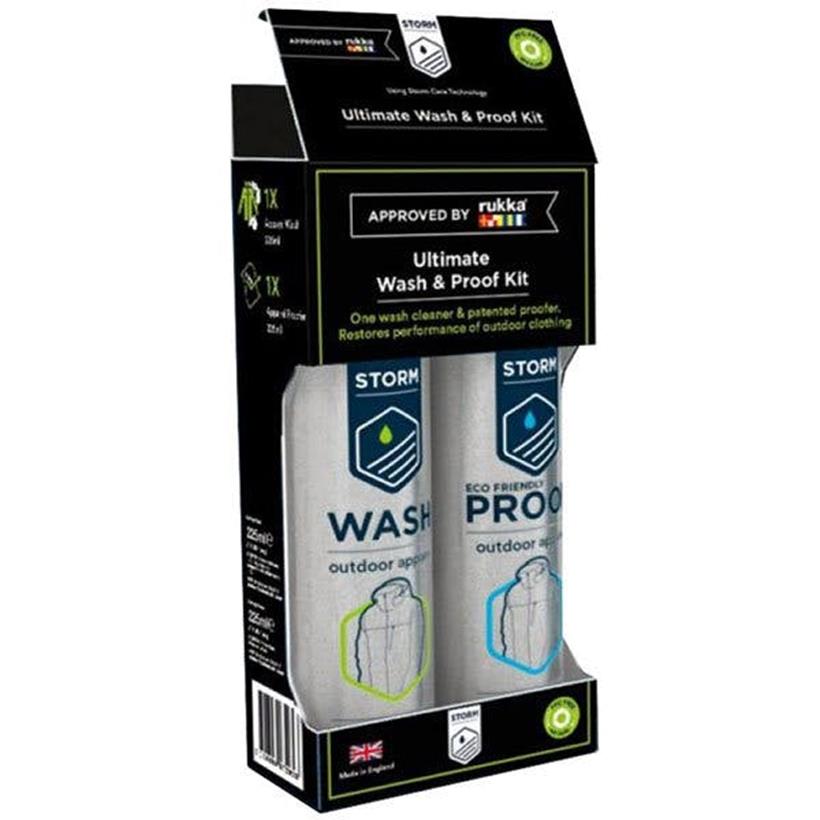Getting fresh: How to wash textile motorbike kit
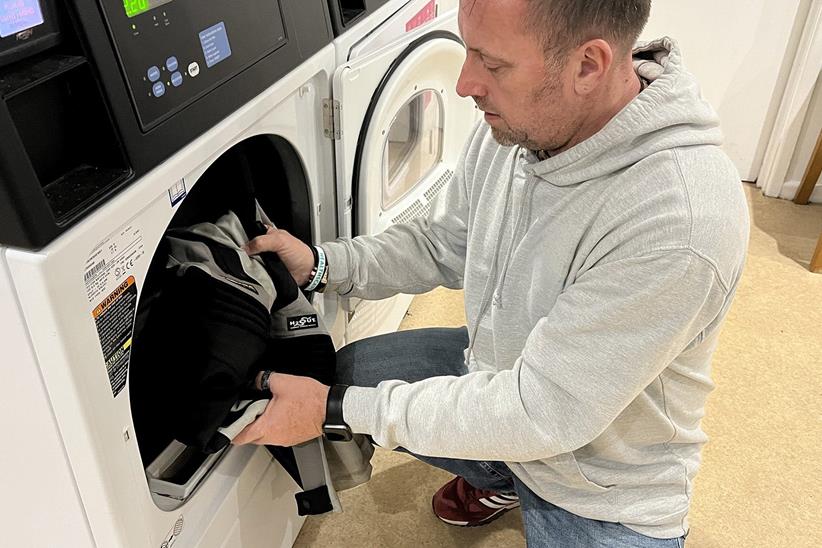
It’s a fact of life that if you ride year-round or in all conditions, then you will probably need to wash your kit sooner or later. Mud, salt and road grime make a right mess of clothing.
While it may not look very nice, there is an additional practical reason to keep your clothing glean too. Dirt can clog the pores of textile or laminate clothing and prevent them from working properly. You can get water seeping into the garment or its breathability can be compromised, both of which defeat the purpose of the clothing in the first place.
The good news is that it is fairly simple to keep your clothing clean. While some will benefit from a wipe down with a damp cloth or sponge to get rid of the dirt, others may need a little more work to get them spick and span and working as they were intended.
How to wash your textile motorcycle clothing
Step 1:
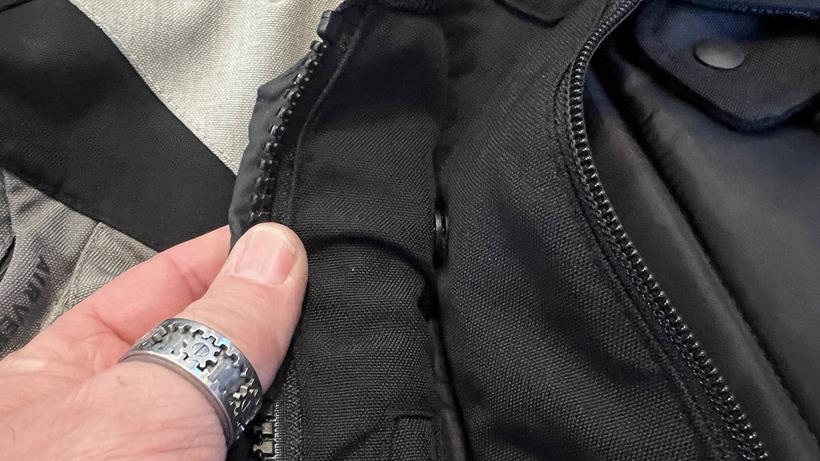
Regardless of how you are washing your clothing, you first need to remove the thermal lining. On this Spidi jacket, it is held in with poppers along the side of the torso and a Velcro strap at the neck.
Step 2:
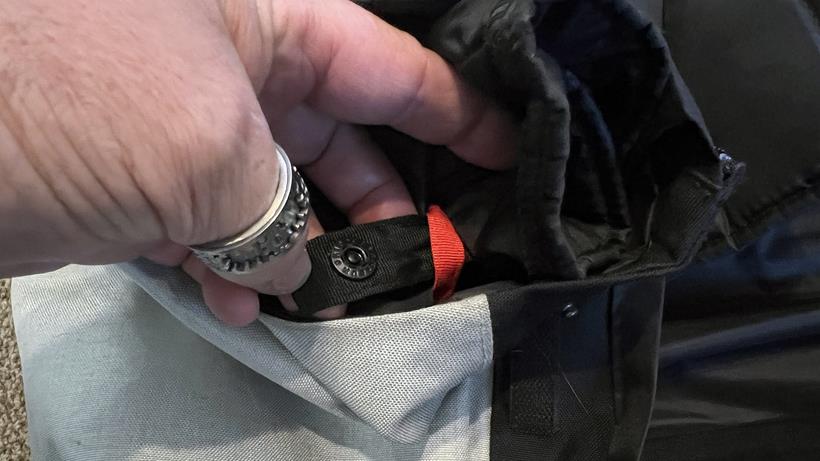
The liner also clips in at the cuffs to prevent it from pulling out when you take it off. We released the poppers and the neck Velcro here too.
Step 3:

With the fasteners released, the thermal liner is removed. This can be washed in a washing machine as a normal garment, just on a cool wash. In this jacket, it has no special properties such as waterproofing or breathability though this may not always be the case, so check before you move on.
Step 4:
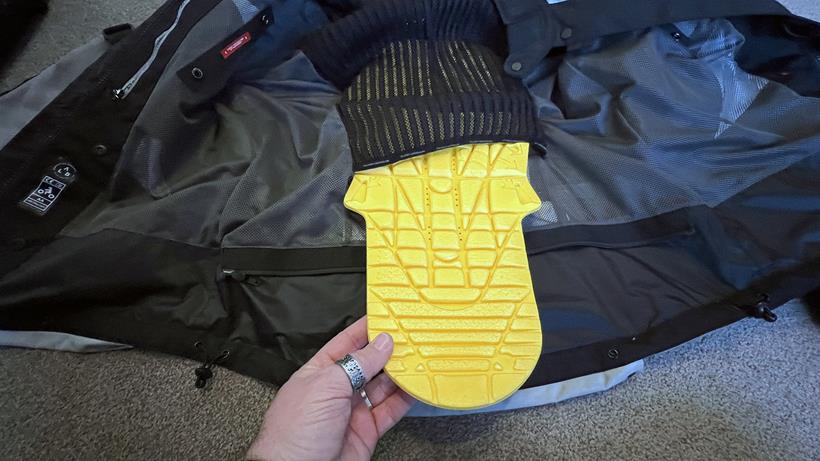
We then began removing the armour from the jacket. We started with the back protector – in this case a large articulated version.
Step 5:

We then removed the shoulder armour. We took photos of its orientation to make sure that we put it all back in the right way round when the jacket was clean. The shoulder armour is held in a Velcro-fastened pouch.
Step 6:
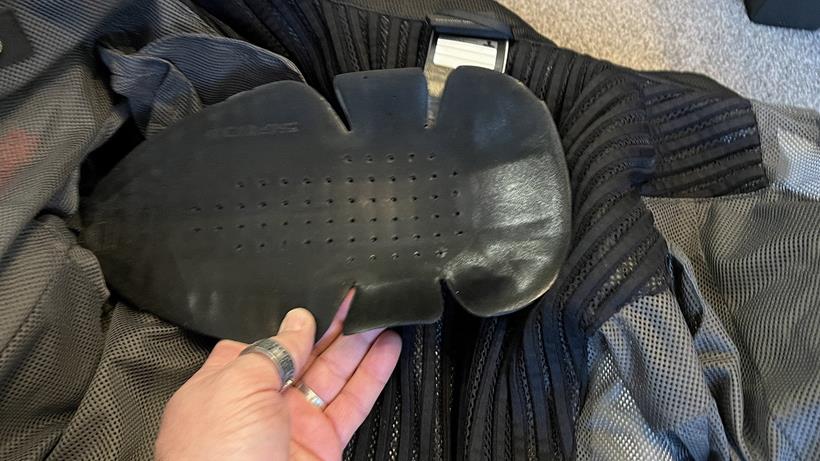
We then removed the elbow armour in the same way as we did the shoulder armour. However, it’s a bit more involved as you can’t get to the pouches so easily and you have to use a little feel to find and release the Velcro fastening.
Step 7:
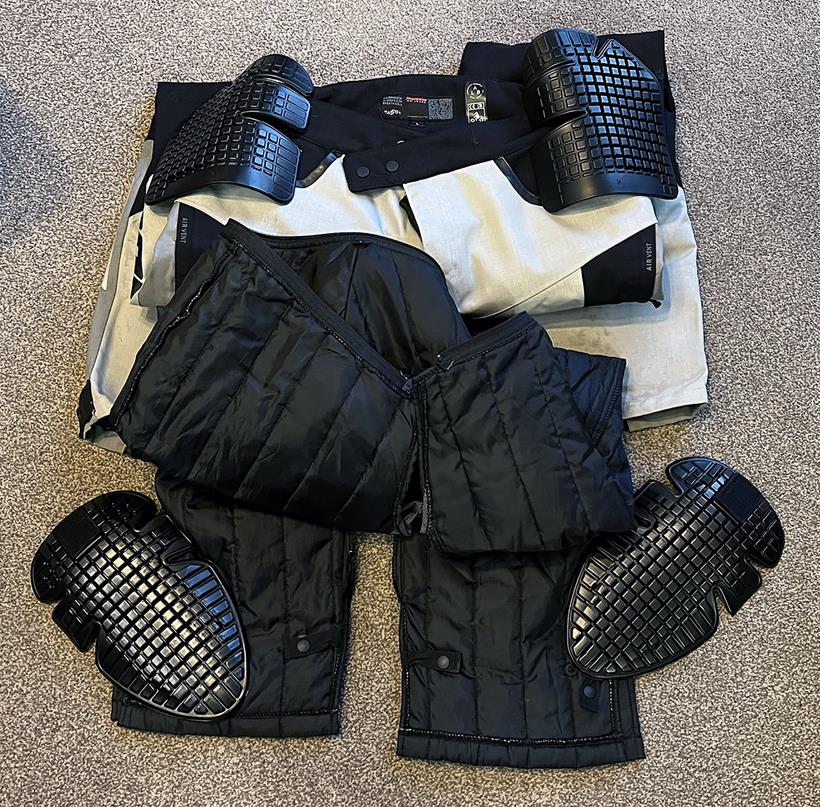
We then followed the same process with the trousers, removing the thermal liner first, followed by the hip and knee armour. Again, we took photos as a record of how the armour was orientated to make reassembly that bit easier.
Step 8:
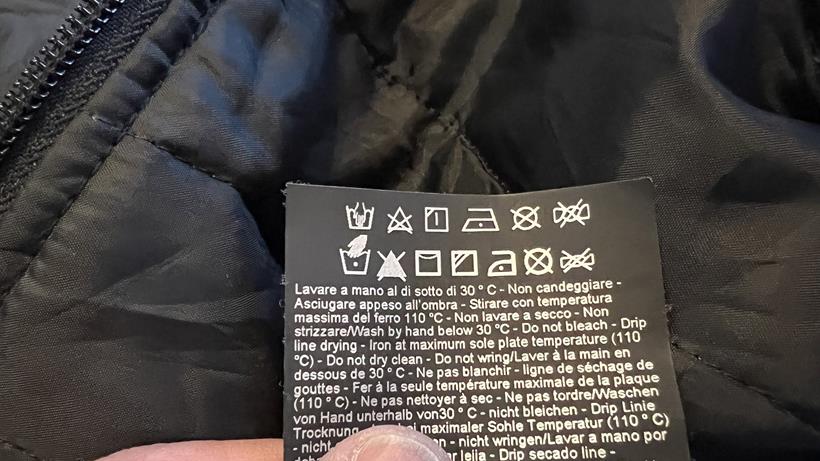
Next, we checked the care label within the garment. Many, like this one, specify hand washing only though experience has shown that if your washing machine has a delicates or hand-wash cycle, that can often be gentle enough to use though you will need to make that decision yourself. We have washed this suit a few times in the machine and it has been fine.
Step 9:
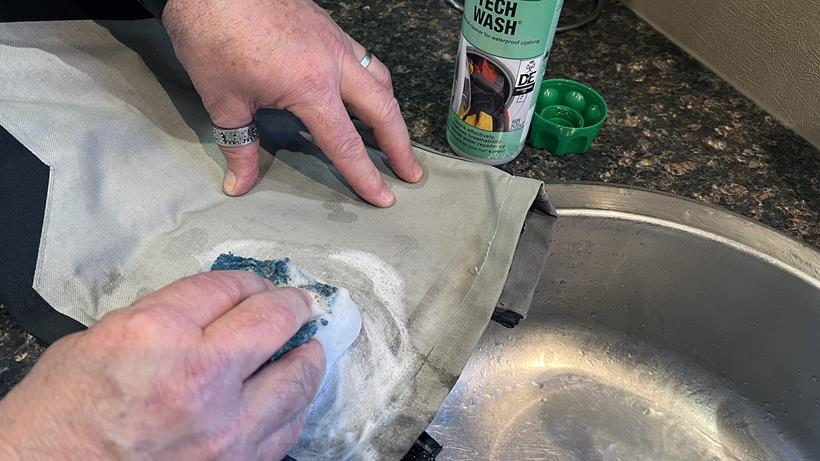
Before we load it into the washing machine though, we wanted to start work on some of the grubbier areas. Most notably at the bottom of the legs, because they are exposed to most road grime and salt.
We wetted the material down and then, dissolved some Nikwax TechWash in a bowl of warm water and gently started to work at the ingrained dirt to loosen it. It wasn’t necessary to try to get it all off at this stage but loosening it and getting the worst of will help later on.
Step 10:
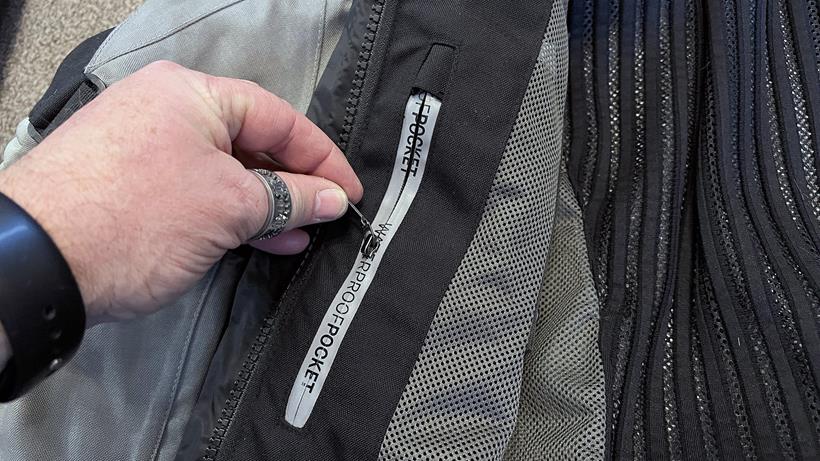
Before loading the jacket and trousers into the washing machine, we did up all the relevant zips and poppers, on pockets or vents, for example.
Step 11:
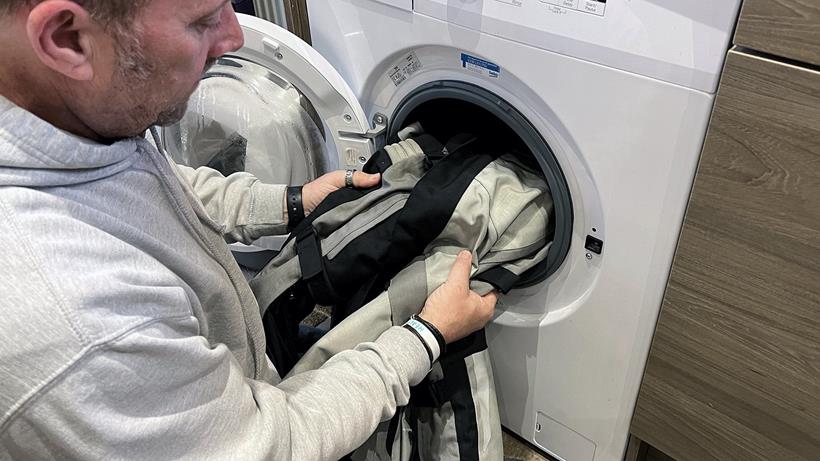
We then loaded the garments into the washing machine, running the jacket on its own, followed by the trousers.
Step 12:
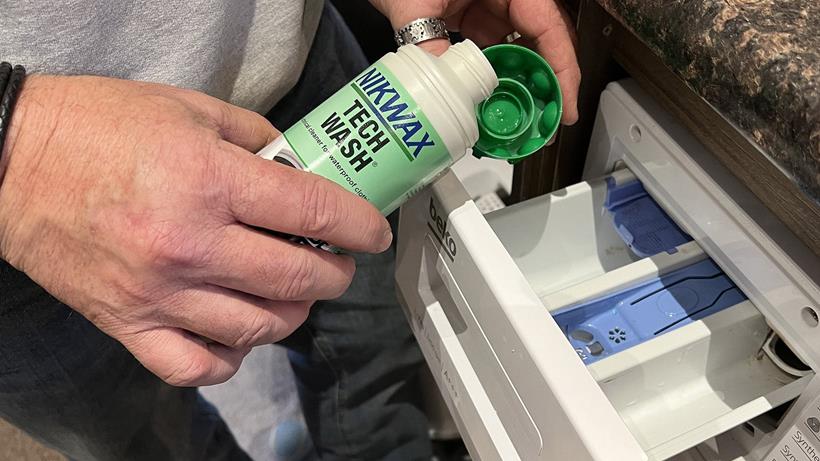
We added more Techwash to the machine’s detergent drawer. However, one thing you must NEVER allow to contact motorcycle clothing is fabric conditioner. If you have recently done a wash using a conditioner, then you should run a load of towels through the machine with no conditioner to remove any traces. We set the machine to run without a spin cycle to prevent damaging the fibres.
Step 13:
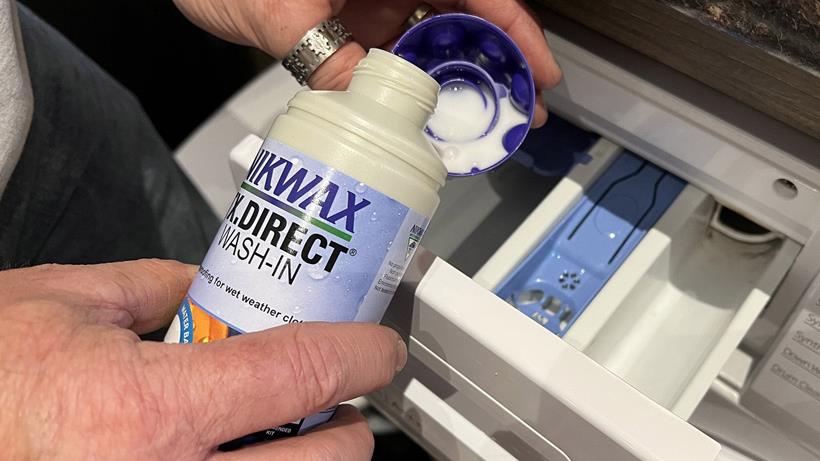
Once the wash and rinse cycles had finished, we added the Nikwax TX.Direct wash-in treatment to help with the waterproofing of the material and set it off on a gentle hand-wash cycle again, with a double rinse too.
Step 14:

Once the second cycle had finished, we took the jacket and trousers out and hung them up to air dry. In the shower is the obvious place so it doesn’t drip all over the floor, which it will on the way anyway, with no spin drying.
Step 15:

Some clothing can be tumble dried but check on the care label before doing this. This isn’t necessarily to help dry the garments but it can help to reactivate the waterproof membrane or any chemical waterproofing treatments applied to the garment.
We ran ours through the tumble drier on a delicate cycle for 20 minutes at the end of the drying process to help reactivate the membrane.
Step 16:
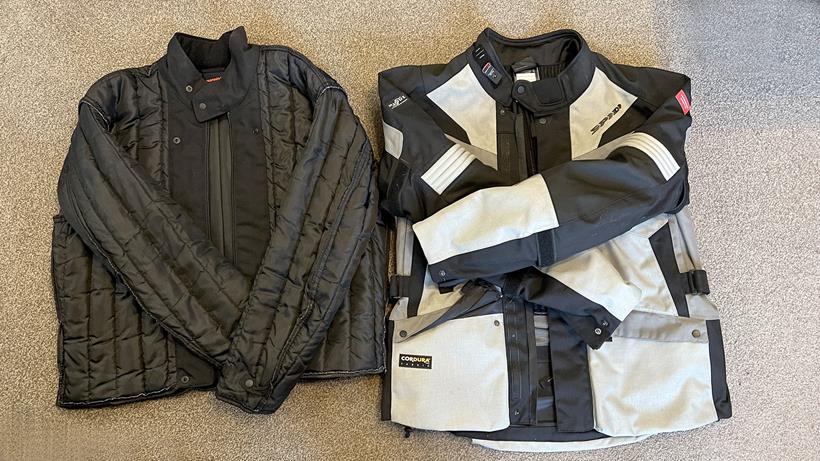
With the washing and re-proofing processes now complete, it was time to reassemble the armour and thermal liners ready to go out and enjoy riding again.
Related products:
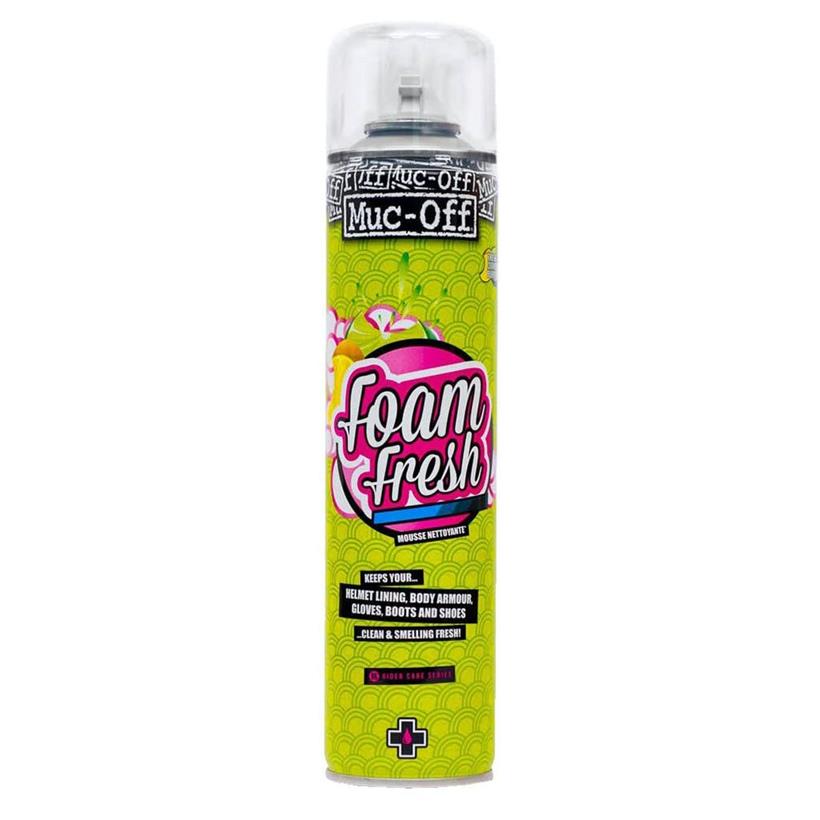

- Just so you know, we may receive a commission or other compensation from the links on this website - read why you should trust us.
